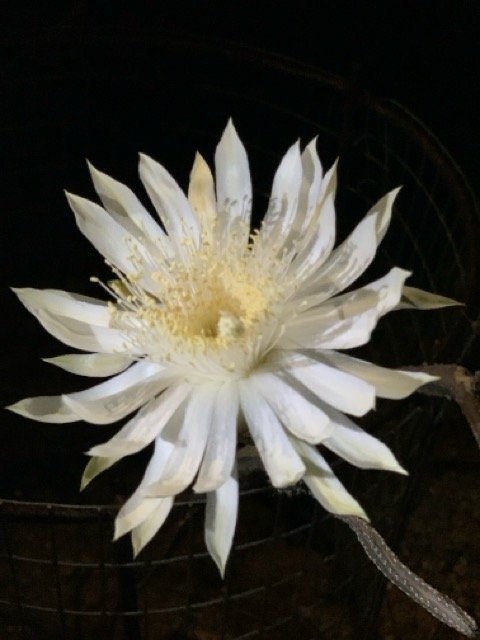Cactus Bloom Guide: Tucson’s Desert in Color
The Sonoran Desert is full of beautiful and delightful surprises. One of our favorites is watching the wild cactus blooms scatter pops of color across the desert canvas. In Tucson, bloom season begins in late spring and continues through late summer, with the peak blooming period from mid-May to mid-June. If you’re hoping to catch some colorful and delicate blooms during your Tucson vacation, this guide will help you plan the perfect dates for your trip!
Your Tucson Cactus Bloom Guide
March
Early-blooming species, such as Beavertail and Hedgehog cacti, begin to appear.
Beavertail cactus (Opuntia basilaris), a cousin of the more famous Prickly Pear, has small, fuzzy-looking glochids instead of the sharp spines of other species. Don’t be fooled, though—these glochids are not to be touched! Attempting to “pet” them will leave you with tiny, irritating slivers in your skin. Beavertail blooms range from dusky pink to bright magenta.
The Hedgehog cactus (Echinocereus) is a multi-stemmed, cylindrical cactus. Its flowers are large, funnel-shaped, and vibrant, displaying shades of yellow, orange, pink, or red. These hardy cacti are often considered a symbol of resilience in the desert.
Another desert favorite making its appearance in spring is the Ocotillo (Fouquieria splendens). While it might look like a collection of tall, spindly sticks most of the year, after a good rain, the Ocotillo bursts to life with bright green leaves and striking crimson-red flower clusters at the tips of its stems.
The fiery Ocotillo blooms typically appear from March through May, with a second show sometimes triggered by the summer monsoon. Ocotillo flowers are a favorite for hummingbirds, making them a beautiful and lively sight in the desert landscape. You’ll spot them along hiking trails in Saguaro National Park, Gates Pass, and scattered throughout the desert around Tucson.
April
Prickly Pear season begins! The Prickly Pear cactus (Opuntia humifusa or Opuntia engelmannii) is a true Sonoran Desert staple. From their pads, called nopales, to their flowers and fruits, these cacti lend their unique flavors to everything from prickly pear margaritas and honey to cactus fries and traditional Mexican dishes. The taste of the nopales is often described as a tangy green bean with a lovely crunch.
Once the flowers bloom, they produce vibrant pink fruits, which are harvested to make juice. You’ll see this signature magenta color in prickly pear margaritas at local favorites like Saguaro Corners or Tohono Chul Bistro. The fruit is also used in candies, lotions, serums, and soaps. Be sure to visit the Western National Parks Store in Northwest Tucson to find unique prickly pear goodies to take home.
Prickly Pear blooms typically appear in April and often bloom a second time in late summer or early fall after the monsoon rains, followed by the annual fruit harvest and canning season.
May
Prickly Pear season continues into May, with blooms reaching their prime. Their sunset-colored petals often feature striking combinations: yellow blending into deep orange, or light orange deepening to red, along with brilliant pinks and fuchsias. After the blooms fade, bright magenta fruits take their place.
Another Sonoran Desert icon, the Saguaro Cactus (Carnegiea gigantea), also begins to bloom in May. Endemic to the Sonoran Desert, the Saguaro shows off its delicate side with funnel-shaped white flowers with yellow centers. These blooms peak between mid-May and mid-June. Fun fact: the Saguaro Blossom has been Arizona’s state flower since 1931. After flowering, the buds turn into fruit with a light, delicate flavor long used by Indigenous peoples.
Cholla cacti also reach peak blooming season in May. With over 20 species in Tucson, Cholla cacti have cylindrical stems and range from creeping to tree-like forms. Their flowers vary from white to vibrant red, offering a spectacular bloom display from this prolific genus.
June
Peak blooming season continues for Prickly Pear and Saguaro cacti.
This month also marks bloom watch for the Queen of the Night (Peniocereus greggii). For most of the year, this elusive cactus appears as a lifeless stick in the sand. But on one magical summer night, it reveals a stunning white bloom resembling a moonlit ballgown, luring nocturnal pollinators.
These highly anticipated and unpredictable blooms are celebrated at Tohono Chul Botanical Garden in Northwest Tucson, home to dozens of these rare cacti. Subscribe to their Bloom Watch Newsletter for real-time updates on this one-night-only floral event — a breathtaking spectacle you won’t want to miss.
July / August
The monsoon rains trigger a second wave of cactus blooms, particularly among the Prickly Pear cacti. Locals will also begin harvesting the ripened prickly pear fruits.
August / September
The Barrel Cactus, especially the Fishhook Barrel Cactus (Ferocactus wislizeni), takes center stage. Though late bloomers, these cacti make up for it with brilliant flower crowns in fiery shades of orange, red, and yellow. Each plant seems determined to outshine the next, putting on a dazzling late-summer display.
Where to See Cactus Blooms in Tucson
Visitors can enjoy cactus blooms at several stunning locations around Tucson, including:
Pair these delicate and varied desert blooms with an iconic Tucson sunset for truly unforgettable photos. Don’t forget to tag us on Instagram @vacayintucson — we’d love to see your view of the blooms!
If you’re planning a cacti bloom adventure to Tucson, our upscale vacation homes are nestled in fantastic desert locations. Check availability and see our properties here.







